How to Start a Fitness Clothing Line [2024]
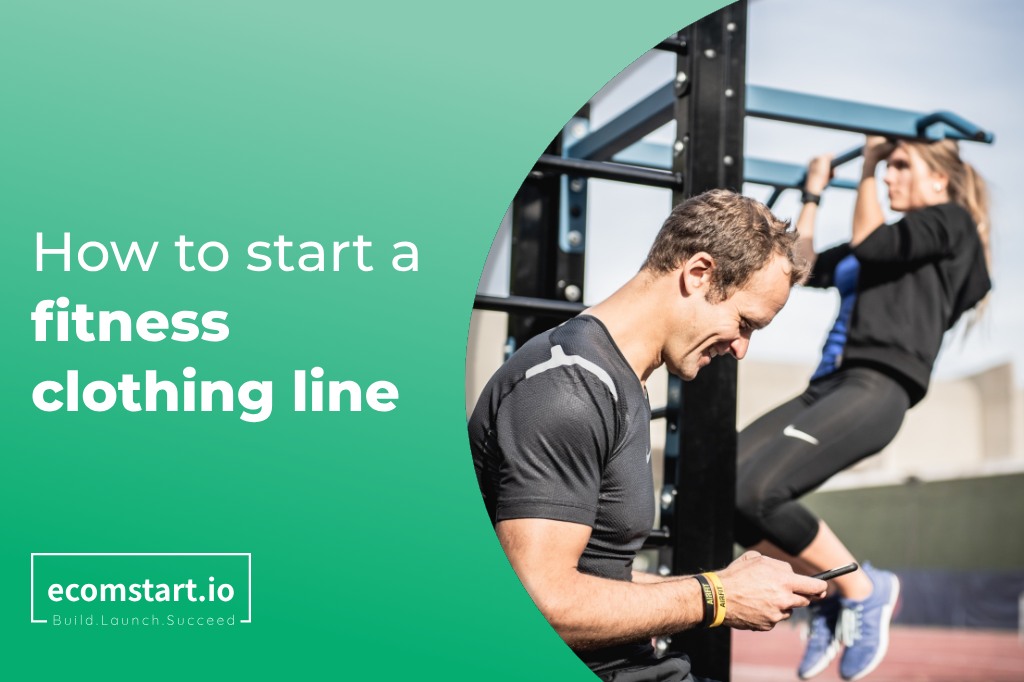
Greetings from the era of a healthy and active lifestyle. Fitness apparel is thriving in the market at present because they no longer remain confined to the gym and sports alone. The sportswear industry’s market size is expected to increase by almost a third before 2028. Therefore, if you would like to go for this particular market, this is just the right time.
This article will serve as a manual to walk you through the process of how to start a fitness clothing line, covering everything from market analysis and business model development to branding and online store setup. This is your road map to success.
1. What’s a fitness clothing line?
A line, collection, or brand that specializes in apparel used specifically for sports or intense & ongoing physical activity is known as a fitness clothing line. Together with tops, bottoms, and footwear, this clothing line frequently included other essential sports accessories like hats and gloves, among others. The material qualities of fitness apparel, such as breathability, sweat absorption, elasticity, flexibility, and comfortable fit, are frequently highlighted by manufacturers. Sports enthusiasts with specific demands for high-quality sportswear are the primary market for fitness apparel.
2. What are the types of fitness clothing?
Non-professionals may group all types of fitness apparel under one term called “workout clothes”, but it’s not in your case. How to start a fitness clothing line when you can’t even tell the differences between various types of workout clothes? Either way, you have to turn yourself into an expert in the fitness industry by distinguishing between different types of fitness apparel, since that’s the first step in starting a fitness clothing line – determining which direction to focus on starting a fitness clothing line.
2.1. Sportswear
To be honest, you can call fitness clothing sportswear, but if you want to start a fitness clothing line, be a professional and don’t refer to them that way.
Sportswear mainly concerns brands that are designed specifically for sporting and athletic activities. Most of these products come in lightweight and flexible forms and are designed to give one full mobility in doing sport. Other types of sportswear include those that are targeted toward a certain sport such as swimming, gymnastics, ice skating, skiing, climbing, or hiking.
They can sometimes include specialized scientific garments that help minimize sweating, reduce friction, and enhance comfort during physical activity.
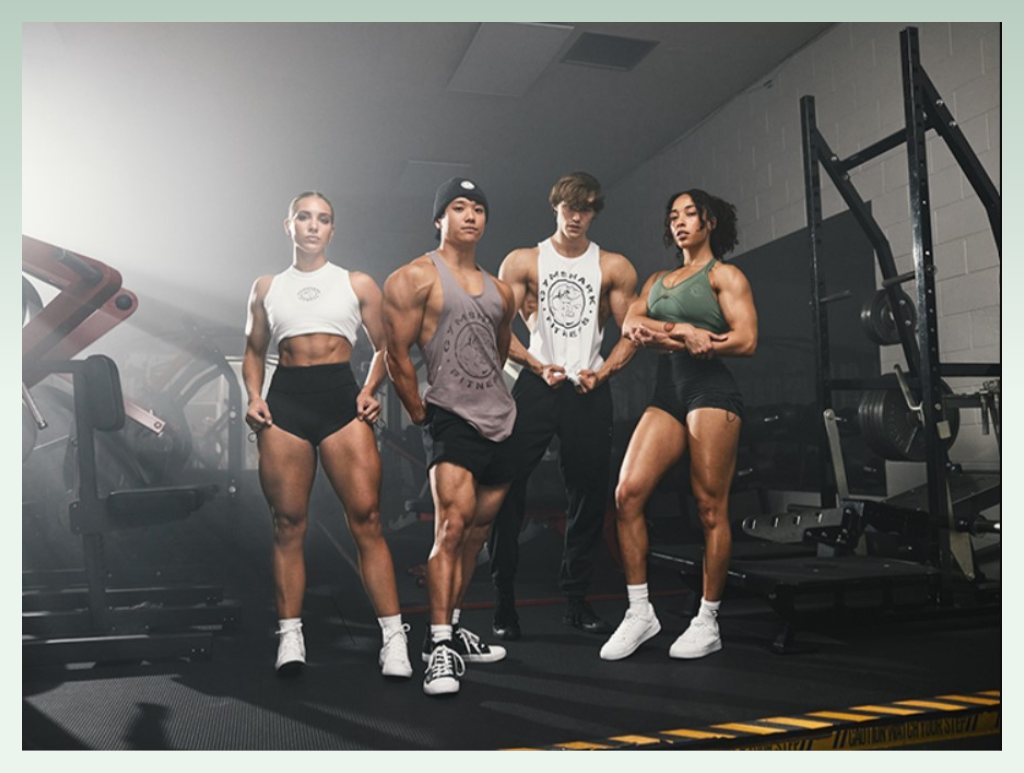
2.2. Activewear
Activewear concentrates on a more active way of lifestyle, just like sportswear. Nevertheless, the clothing made should go beyond any one sport.
Activewear entails such garments as tank tops, yoga pants, jogger pants, polo shirts, and sneakers,…These include fashionable but functional accessories. They can be used for training sports professionals, but not for competitions.
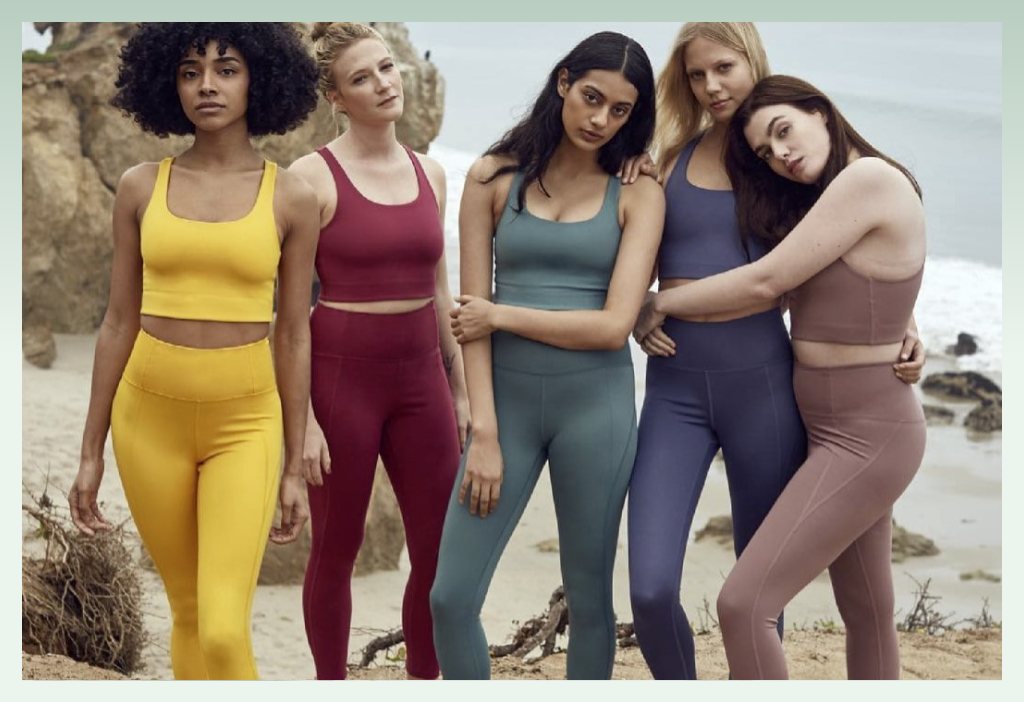
2.3. Athleisure
The term “athleisure” refers to a hybrid fitness clothing that combines the words ”athletic” and ”leisure”. Since the fitness realm has today taken on a more casual connotation, the boundaries between activewear and athleisure have become less distinct. Yet, they have slightly different meanings.
Though these pieces of athleisure clothing may be worn when doing some sports, they are not specially made for the sports themselves. Rather, they are fashionable and comfortable clothing that people could wear to the gym and other activities.
The athleisure category has been identified as the most popular fitness apparel collection currently in existence. It targets the largest market audience and is suitable for individuals who prefer comfort while at home, at work, and on-street.
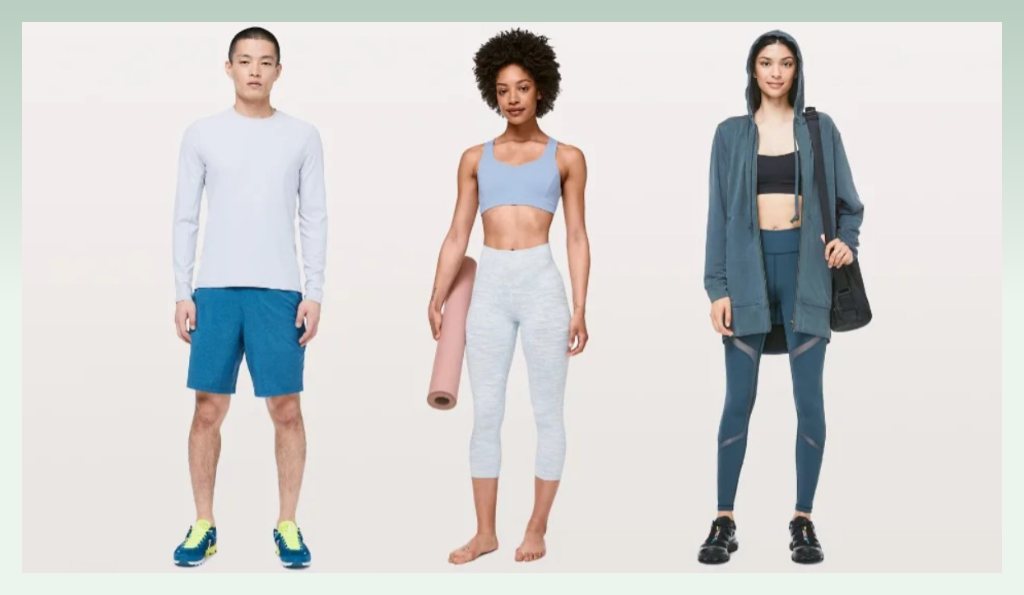
2.4. Streetwear
Streetwear can be categorized as yet another form of athleisure. While streetwear may also be considered fitness clothing, it tends to bear some distance from this label when compared with such types.
Cult-like followers have contributed immensely to giving streetwear a market. For instance, high-end fashion brands such as Chanel and Gucci have also ventured into what is known as streetwear clothing. Once more, these clothes are not designed to target any particular sport. Like tinted lip balms that are neither moisturizing enough to be a good lip balm nor pigmented enough to qualify as lipstick. Nonetheless, it gives consumers a chance to have an attitude toward fashion.

3. Why start a fitness clothing line?
The trend toward active and healthy living has undoubtedly contributed to the growth of the fitness industry in recent years. Not to add that the post-pandemic surge in health concerns inevitably led to the growth of sports and health services, of which fitness apparel is a niche market that not many people are aware. Consumers no longer just ask for “workout clothes” or “gym clothes,” but rather, they want adaptable attire that can be used for a variety of activities outside of the gym. All those above just contributed a small bit to the fact that customers are now willing to pay for high-quality fitness apparel.
Your idea to start a fitness clothing line therefore makes perfect sense, regardless of whether you are a gym owner, an athlete looking to boost your reputation, or just someone who sees the potential and wants to invest in this market. Starting a fitness clothing brand now is far more appealing than other fashion categories. Not to mention that there are now a lot more options for brand promotion because fitness apparel is no longer solely associated with the gym.
4. How much profit can a fitness apparel business make?
In reality, it would be impossible to give an accurate answer to this question. The profit your fitness clothing line can earn could vary based on store size, branches, and efficiency in sales. All those elements involved with branding positions and customers, as well as placement of your fitness clothing in the marketplace.
An owner of a fitness apparel business can anticipate making between $40,000 and $80,000 annually in salary on average. Successful store owners report turning a profit of over $76,000 after three years in business. Normally, a fitness clothing brand owner may earn about 10 to 20 percent profit margins.
Once again, these are only some sample figures. Certainly, you can reach this number if you know how to start a fitness clothing line.
5. How to start a fitness clothing line
5.1. Research industry and target market
One should know some of the most popular fitness clothing brands – take Adidas or Nike, for example. Of course, they are not the only brands in the fitness wear market. More than half of this market consists of new and medium to small fitness brands that are similar to yours. The success of entrepreneurs who make good quality products is possible, and it requires a strong business plan and excellent marketing.
Market
First of all, it is important to look at the big picture of the fitness clothing market and find out what the existing trends and possibilities are. This research should take into account key factors such as the demand from consumers, the size of the market if there is any change in the industry, or what potential gap your clothing line can fill in.
Competitors
New entrepreneurs should always research existing fitness brands and identify loopholes, weaknesses, or what is missing within the market. Understanding your competitors is quite insightful since it could include marketing techniques, price tags, distribution pathways as well and customer loyalty mechanisms.
Target audience
Surveys, focus groups, and social media listening could give an informed perspective on the specific target audience’s requirements and aspirations. It involves looking at age, gender, intended fitness objectives, and buyer behavior. Also, it is important to identify the pain points for them as well as the solution that they will desire.
5.2. Choose what product to sell
While conducting market research you must consider the overall outlook, but when it comes to brand positioning or identifying niche markets, then your strategy should include narrowly focused niches. That’s something you should begin with at least. Some of these niche directions in the fitness clothing market remain fairly unexplored by most businesses providing the opportunity for brands to be unique and attract dedicated customers with specific needs. In most cases, you will be guided by your own knowledge or experience about fitness apparel, but don’t forget to make sure that your brand will still have room to grow in your chosen space. Some examples of choosing specific products to sell include:
- Women’s tops: T-shirt, sports bra, crop tops,…
- Hoodies, sweatshirts
- Workout accessories: hats, gloves, socks,…
- Children sportswear
- Plus size sportswear
5.3. Choose a business model
Before selecting a manufacturer for your clothing line, you must first decide on your business model. Below are some of the notable options that you can select.
Produce your own
First, you have the option of going for ODM – original design manufacturing. Your designs are used in creating the original fitness clothing that carries your brand’s markings. On the positive side, creating sportswear from scratch affords you full command. With this, you will be able to customize your clothes as well as produce new unseen products in the marketplace.
Unfortunately, this strategy is very costly and takes a long period of time. You must at least rent a warehouse if you are going to be controlling your stock. This means you will also bear all labor costs connected to a process of production. What is more, your business will not be a success overnight and it could mean that you have lots of products already stacked up in store.
Print-on-demand
If you’re simply selling the brand name, you could go with print-on-demand, which is also known as white labeling. This is good for providing branded promotional items for gyms, fitness centers, and personal trainers. Activewear with existing brand labels can be printed with your brand name/logo on them.
With this option, you can select already-made products from some manufacturers and add your individual creative touches to them. It often works for businesses that seek to establish athleisure or streetwear brands.
Regardless of having few controls on it, this method is efficient for saving both money and time. Certain “print on demand” websites allow you to send goods directly to your customers, with no concerns involving the fulfillment process.
Dropshipping
Dropshipping removes any requirements for inventory storage, no necessity to purchase products in advance. Additionally, you will not have to store the items because you will only supply what has been purchased by your customers. Furthermore, it is less likely that one would incur losses that result when they are left with unsold stock.
Nevertheless, considering that you do not deal with the purchase of products at wholesale prices, your profit margins might not be as high as those traditionally associated with wholesale businesses. There are few control measures and the supplier determines the product standards and rates, speed of delivery, and client assistance. Moreover, a bad vendor can bring disrepute to your company.
Wholesale
For this type of business, you have the advantage of being able to create relations with product producers and vendors for them to be your partners who will cooperate with you in the long run. It is possible to buy products wholesale and sell them at any given price, hence leading to maximum profits.
However, most wholesalers require that you buy at least a certain amount of different products which could hinder your ability to provide numerous sportswear items. You must also budget for your other operational needs which include inventory, warehousing, storage, and shipment that require huge advance payment.
Private label
This is one of the less-known options, in which the manufacturer produces generic garments which are then labeled with your brand and logo, and any other brand name is removed from the clothing.
5.4. Create a business plan
Everything needs a plan – or multiple plans, and so does your potentially brilliant business. An indispensable step in how to start a fitness clothing line is to build the most thorough business plan possible. Who knows, maybe in the future some startup companies will look to your plan as an example of success. Consider the elements below as your guidebook through the launch process:
- Executive summary: An outline for the central ingredients of a business plan regarding the fitness clothing line, comprising its mission, goals, and notable points.
- Business overview: A brief outline of your fitness clothing line including its mission, vision, values, and how the product addresses the issues in the marketing environment.
- Product & services: Specifically detailing offerings of your fitness clothing line such as products offered, accessories, and services.
- Market analysis: A detailed study of the demographic of the target market, together with current trends and possible avenues.
- Competitive analysis: Market assessment for the rivals in the fitness apparel market – their key powers, vulnerabilities, threats and opportunities influencing the business plan.
- Sales & Marketing: Branding, advertising, and selling strategies that aim to reach the specific market segment.
- Management team: Background information on the key individuals at the head of the brand, including details on their qualifications as well as positions at the organization.
- Operations plan: The operations management that encompasses manufacturing, operations, and logistics.
- Financial plan: This includes a complete financial statement projecting an estimate of revenue, expenditure, and profitability of the fitness clothing line over a certain time.
- Appendix: Supplementary information and documentation, such as market research reports, more details of the finances related to the business, and any other helpful files.
5.5. Develop a brand
If you have completed the business plan – either you complete it yourself or an expert you hire completes it, as long as it is completed it is fine. Now it’s time to brand your fitness clothing line. Ensure that you have the following components:
Name
One of a successful brand’s first and foremost aspects is a memorable name. Think of your brand as your child and name it. This is where your brand name comes in. This name will be used by customers to recognize your brand and help in spreading information through verbal communication. Therefore, it should be a short, sweet, and catchy name that will grab the attention of potential clients.
Visual identity
Based on your brand name, you can come up with some ideas regarding components of your visual identity. The first thing you should consider is your logo, which is one of the assets that is considered a highlight of your brand’s appearance. It could stand alone as your brand name as a wordmark, or coupled with a graphic of your choice.
Ensure that you choose the right color schemes for your logo, which will be replicated on other branding materials. Some colors can generate specific feelings.
During this phase, you usually have to hire a designer for the logo. Logo design is usually among the services offered by most branding companies.
Personality
Let’s consider your brand personality. What are some of the core values and traits that you want to be associated with your company by customers? Are you ready to be perceived as rude, young, sporty, cheeky, witty, and powerful?
The identity that represents your brand persona should be included within your branded items as well as your content for marketing purposes. Select an appropriate tone that appeals to your target market in both your online as well as offline communication materials.
5.6. Select a marketplace or platform to sell on
Selecting the right marketplace or platform for selling clothes depends on several factors, such as your target audience, the type of clothing you offer, and your overall business objectives. There are various online marketplaces available, including Amazon, Etsy, and Depop, each catering to different demographics and styles.
Nevertheless, if your priority is to maintain control over your brand identity and enhance the overall customer experience, opting for an eCommerce platform to create your standalone website might be the most suitable choice. Consider some of the popular eCommerce platforms like Shopify, WooCommerce, or BigCommerce, which provide customizable solutions to build and manage your online store seamlessly.
- Shopify is one of the most popular eCommerce platforms with an easy-to-use interface and rich functionality. It provides many customized themes, safe payment mechanisms, and smooth integration with multiple apps as well as extensions. However, it is also costly because apart from subscription fees, there are transaction fees.
- Magento is a more powerful and adaptable option that may fit larger businesses. It has sophisticated features with great flexibility and customization options, but can be complicated to set up. You should be ready for additional spending of developing costs onto specialists and developers, as Magneto necessarily demands the knowledge of technology or technically advanced at least.
- WooCommerce – a plugin for WordPress – is a preferred option for small and middle-level companies. Customizable, with high extensions and user-friendly, but it may need extra plugins for some functions and therefore is not that ideal for extensive projects.
- Wix offers a quick and hassle-free means for beginners with its drag-and-drop approach, making it easy to start a fitness clothing line. However, it can be limited in terms of scaling up and the range of customizations it offers.
Whichever way you go, you need to get on which platform to set up the store for your online store. Consider all unique requirements and other factors and pick one that is best suited to fit your business.
5.7. Set up your online store
- Step 1: Establishing an account for your fitness apparel eCommerce store.
- Step 2: Customize your store to align with your brand
Align your brand’s colors, typography, and overall aesthetic with a theme. Seek out a responsive design that adapts to various screen sizes – desktop and mobile devices are the most common standard. Upload your logo and high-quality product images to create an appealing storefront.
- Step 3: Create essential pages
Several additional pages are indispensable for an online store.
For instance, an ‘About Us’ page introduces essential information such as your brand’s story, its mission, vision, and value. The ”Contact” page provides contact details of your store and should include email address, phone number, social media profiles, and head office (if any). It may be worth noting some other pages you should consider incorporating: FAQs, Shipping & Returns, Privacy Policies,..all designed not only to handle common questions but also to provide reassurance regarding their shopping experience with us.
- Step 4: Writing engaging, informative product descriptions and categories.
Provide detailed product descriptions and images within each category to accentuate the unique features and advantages of your offerings.
- Step 5: Set up secure payment gateways & display delivery options
Select a payment gateway that aligns with the preferred payment methods of your target market; this will ensure convenience for your customers. Ensure SSL encryption is enabled to safeguard sensitive customer data throughout the payment process.
To maintain a high level of customer satisfaction, it is imperative to provide customers with transparent shipping information, including estimated delivery times and tracking numbers.
5.8. Develop a marketing strategy
You should utilize every online resource available to you as an online retailer of fitness apparel to build your brand. Using the following tools, begin developing a development strategy after creating an online store on one of the eCommerce platforms:
Social networks
Alright, so once more, this is 2023. You cannot open an online store and hope that customers will find you that way. Finding potential customers and growing your clientele and market will be made easier if you use social media platforms effectively.
Facebook is an excellent platform for developing short-text content, experimenting with various content types like photos, videos, and short clips, and optimizing paid advertising. Similar to Facebook, X (formerly Twitter) also lets you optimize hashtags, but editing and optimizing content is a little trickier. Not to mention the changes in the policy on this platform are quite often.
Two platforms that focus on images and visuals are Pinterest and Instagram. Instagram’s tagging feature lets you utilize user-generated content. In the interim, TikTok presents itself as a viable platform for creating short content.
SEO
SEO optimization is a fundamental aspect of eCommerce development that will drive natural traffic to your website. Effective SEO will guarantee your online store is ranked highly on popular search engines like Google, maintain its ranks, and – most importantly – keep it there without being demoted from its current position. Conversely, ineffective SEO can result in the worst situation possible – your store is virtually invisible to search engines, and your customers are far from aware of the existence of it.
While there are numerous ways to improve SEO, the most fundamental one still involves using keywords, in this case, fitness apparel-related research terms and keyword phrases. As naturally as possible, incorporate your product names and descriptions along with your keywords. Optimize images by giving them appropriate names and alt texts. Additionally, if you use an eCommerce platform, think about utilizing plugins that assist SEO.
Influencer
Nothing is more reliable than influencers to promote your products—fitness influencers, specifically. Well, it might not be totally reliable, but this is a business, after all. You can’t do door-to-door marketing or small-scale word-of-mouth advertising in this social media age. Choose influencers that align with your brand positioning, such as bodybuilders, athletes, nutritionists, or fitness bloggers. As long as brand promotion is successful, micro-influencers with a modest number of followers are also a good option if your company is small or medium-sized.
Reach out to them to offer partnership – affiliate marketing, sponsored content, and product reviews. A win-win situation, as often seen in influencer marketing.
Sale channels
There are quite a few different sales channels for fitness clothing, so keep in mind that the channels below are just a few examples. Channel selection still depends on consumer requirements, the market you choose, store size, budget, etc.
- Retail store: A physical retail store for your customers to directly experience and try on the clothes. Of course, it comes with all sorts of costs for space and staff.
- Online retailers: For example, eCommerce platforms such as Amazon, eBay,…
- Pop-up shops: These may be understood as temporary shops, kiosk-like shops that are located in shopping centers, or large-scale events.
- Social media: You can link to your store from social media posts.
- Fitness studios/gyms: Some gyms or studios have stores where they display and sell their brand’s fitness apparel products.
6. Tips for successfully starting a fitness clothing line business
6.1. Select products
Although the market for fitness apparel may seem to have no limit, you can’t just decide to sell every kind of it. This is not the time to take risks – if you’re that ambitious, at least try to wait until your business grows sustainably. Determine the niche market within this sizable market, as previously mentioned. When your company gets big enough, it must be able to expand beyond that niche.
Decide which sportswear products your company will focus on. Would you rather concentrate on selling women’s workout clothing or also sell plus-size sportswear? Given how versatile activewear is, would you consider selling them? Developing a well-defined business plan and conducting extensive research and surveys are necessary steps in identifying them.
6.2. Be one step ahead
In the market, being one step ahead of your competitors can sometimes be sufficient because, in this case, taking “one step” ahead can lead to remarkable success (and perhaps vice versa). Think about the following queries to get the most complete picture of the market:
- What social media trends are we seeing right now? What are the newest trends in the fashion industry? Is it stable and can you follow it?
- How do your clients spend their money?
- What promotions or offers do customers receive from your rivals in the market?
It’s critical to keep an eye out for new trends in the industry to seize opportunities before they become the norm. That’s how you advance in this market. To improve the appeal of your store, you can also refer to our guide on writing engaging product descriptions.
6.3. Invest in marketing
The proverb “Good wine needs no bush” may come to mind, but save that for later. To raise brand awareness at first, concentrate on marketing. Think about all of the aforementioned strategies: influencer marketing, paid advertising, eCommerce development, and SEO optimization,…Consider them all, but only use the ones that are most appropriate and effective for your company.
If at all feasible, think about investing in a team of qualified marketing specialists. Either way, as your company expands, you’ll need to have your own marketing apartment.
6.4. Build customer relationship
Apart from delivering high-quality products, discounts, and promotions to customers, good customer service is crucial for building your brand. Experience has shown that a lot of high-quality brands receive bad reviews because their customer service is inadequate for such a prestigious brand. In response to client requests, act swiftly, efficiently, and directly to the point. Furthermore, you ought to think about utilizing customer relationship management (CRM), which enables email marketing to be personalized for each customer. Engage in active customer service on social media.
7. Example of some successful fitness clothing brands
7.1. Gymshark
Workout clothing brand Gymshark has become a recognizable name throughout the world. Their name was often the first to come to mind if one was being asked about fitness clothing. They have a unique brand aesthetic, which they have managed to maintain on numerous platforms thus accumulating millions of followers in over one hundred and thirty-one countries.
Through migration to Shopify Plus, Gymshark became a top-selling fitness apparel brand in the industry generating over £41 million in sales in 2017. Additionally, they scaled internationally. Gymshark’s retail store is enabled by Shopify’s POS system thus providing an immersion online-offline customer experience, where customers can meet their fitness idols and buy products at expos and special events.
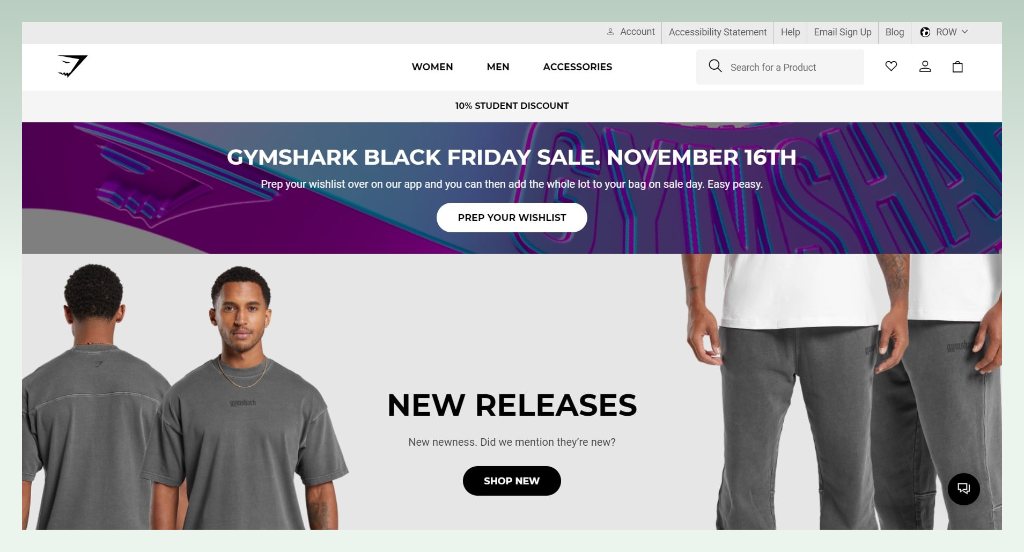
7.2. Girlfriend Collective
Girlfriend Collective sells minimalist activewear made from recycled materials with a wide range of sizes. The highlight feature of this brand is that it ensures that there are no social and environmental damages involved throughout its manufacturing process. They use fabric made from recycling materials, such as water bottles and discarded fishing nets.
To advertise the new business, Girlfriend Collective ran a campaign where clients would get their leggings at no cost but only pay for the delivery. This approach to word-of-mouth marketing avoids the necessity of large advertising budgets and the use of third parties.

7.3. Lululemon
Lululemon started as a design studio during the day and a yoga studio at night. It was one of the first brands that grasped the trend of getting a healthy lifestyle – mainly among women – and manufactured a line of yoga wear and activewear clothes.
The ambassadors of the brand aren’t mere influencers but local athletes, yoga instructors, and wellness gurus,…Such an approach to business organization and having a clear vision allowed the company to penetrate the market strongly. These were no longer just another wellness and athleisure brand.
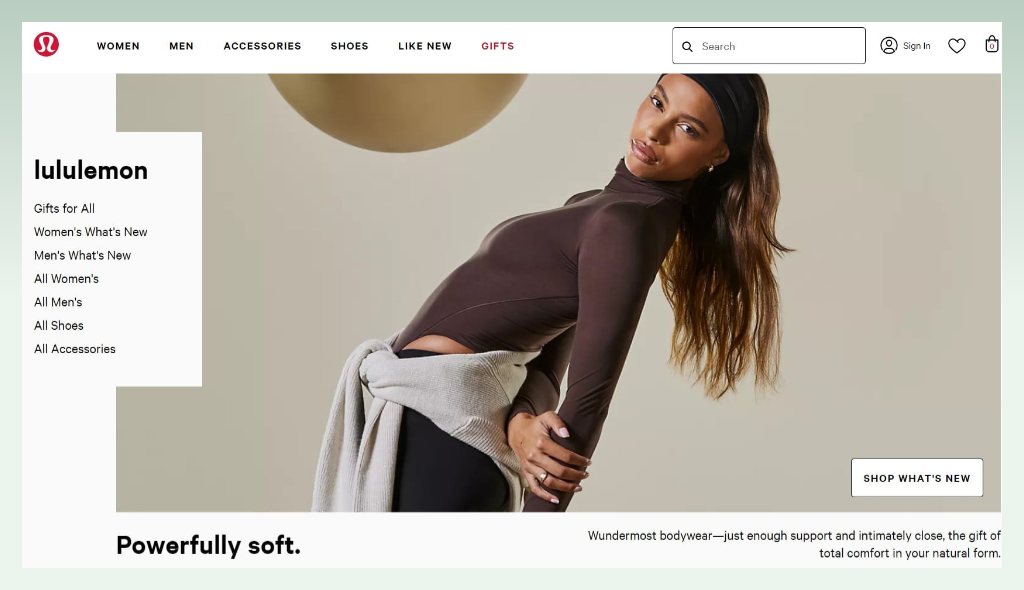
8. Conclusion
We have provided you with the essentials of how to start a fitness clothing line. Successfully starting a fitness clothing line involves both passion and careful business planning. You can set up a popular brand after adapting yourself and using the proper strategy.
Be sure to also pay special attention to legal, license, and tax requirements while setting up a fitness apparel brand on your own. Constantly keep learning to remain competitive and have a successful fitness apparel store in the future by understanding industry trends, customer preferences, and new technologies.


